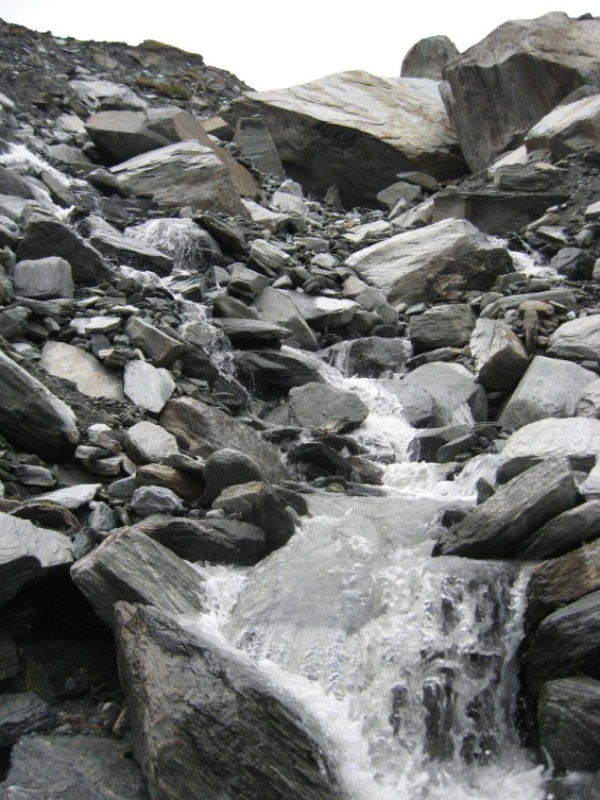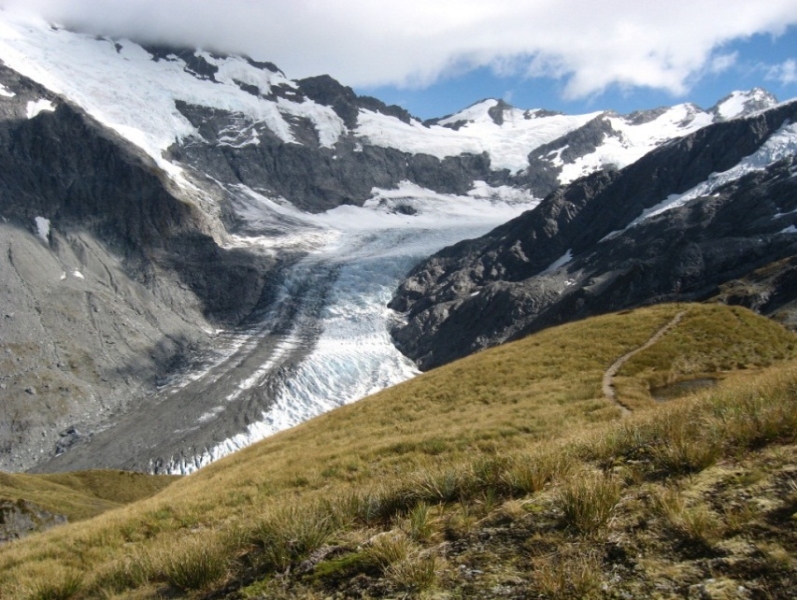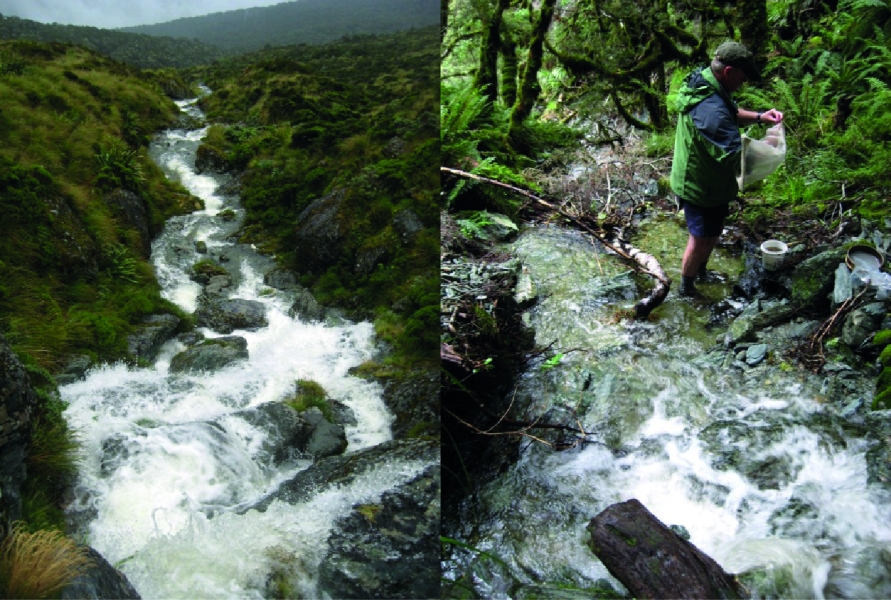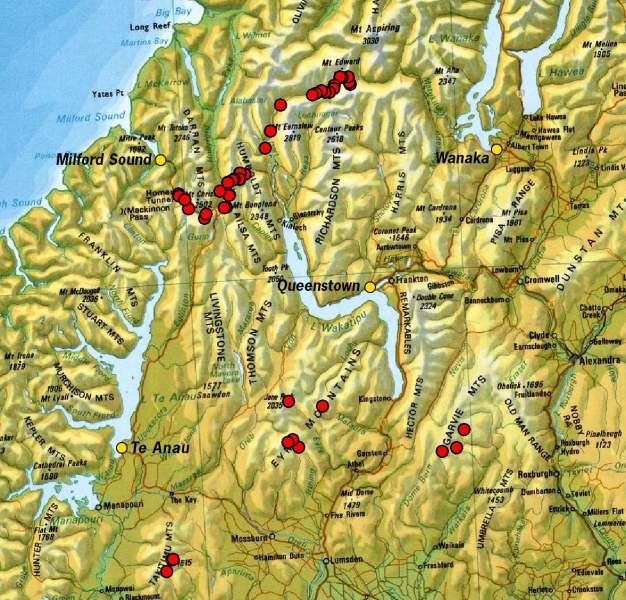After 150 years of research, one might assume that we have a fairly complete picture of the invertebrate communities in New Zealand streams and rivers. However new research suggests that high altitude streams have distinctly different, poorly-known, biological communities.
A new classification system of New Zealand streams, called FWENZ (Freshwater Environments of New Zealand) was developed by NIWA in 2010, and separates New Zealand streams into 20 groups. Seven of these groups represent high-altitude streams that have almost no recorded data on macro-invertebrates or fish. Surprisingly many of these streams occur along some of our most popular tramping tracks.
Filling this gap in our knowledge of high altitude stream communities is important for several reasons. First, we cannot protect New Zealand's biodiversity if we do not know what is there. Second, a classification system is a valuable tool for management of streams and rivers. But classification systems rely on good data to produce sensible results, so if we want robust classification systems, we need to provide a complete data set. Third, while impacts of local human activities usually do not reach high-altitude ecosystems, climate change is increasingly affecting all parts of the biosphere, and there are growing concerns that alpine ecosystems in particular are threatened. We need "baseline" data on biological communities in order to predict or detect future impacts of climate change. Finally, there are many research questions in the fields of biogeography and the ecology of extreme environments that may be generated and/or answered by knowing more about our alpine aquatic fauna. So in March 2012, NIWA scientist Dr. Richard Storey visited several areas of the Southern Alps, with field assistants from Department of Conservation, University of Canterbury and Environment Southland. The group collected benthic (bottom-dwelling) invertebrates from 48 streams in seven poorly-described FWENZ groups, focusing on areas where FWENZ showed there was a concentration of these groups.
Glacial influence produces three groups in FWENZ, so the group began at the Cascade Saddle, near Wanaka, and followed the Dart River downstream to sample inflows from three different glaciers. They gained access to other steep, glacier-fed streams along the Milford Sound Road. Low summer temperatures produce several more FWENZ groups, so samples were collected along the top of the Routeburn Track, near Queenstown, and from a number of small headwater streams in the Eyre, Garvie and Takitimu Mountains in Southland.
"We were surprised by the high diversity of macro-invertebrates we found in these high-altitude streams." Says Dr Storey "Even streams that seemed to have nothing but stones, sand and water [photo 1] had a number of insect taxa. In total, among the first 33 sites we identified 112 invertebrate taxa, including three mayfly, 16 stonefly, 30 caddisfly and 36 Diptera (true fly) taxa". The actual diversity is undoubtedly higher than this, as some of these taxa could only be identified to genus level, and it is very likely that some genera contained several species. The actual species were also interesting, a number of the caddisflies are alpine specialists that are never found in lowland streams. A particular highlight was a stonefly called Zelandobius edensis that had previously only been recorded from one site in north Canterbury but was found at a number of sites on this trip.
We were able to confirm that overall the invertebrate community was distinctly different to that in mid- or low-altitude streams. However, we could not find clear differences among most of the high-altitude FWENZ groups that we sampled. This suggests that perhaps FWENZ had struggled to produce realistic stream groups for high altitudes due to the lack of data.
We also looked at what habitat characteristics were most important in determining what species could live in different streams. The most important factor was the amount of organic matter (leaves and wood) in the streams. Most of the streams sampled were above the tree line, and some had very little vegetation at all in their catchments. Many aquatic invertebrates feed primarily on fragments of leaves and wood, so their abundance and diversity would be strongly limited by the poor food supply. The next most important factor was glacial influence. Both FWENZ and overseas studies of alpine streams have shown that glaciers produce a distinct invertebrate community. The extremely low temperatures (typically less than 1 °C near the glacier mouth), high turbidity (which can clog the gills of invertebrates) and very unstable flows (due to cycles of freezing and thawing) create a very harsh environment that only a few invertebrate species can survive.
We were also curious whether the different mountain ranges had distinct invertebrate communities. Mountains can act like "islands" surrounded by a "sea" of lowlands, so potentially could have distinct communities just as real islands do. We found that the different ranges had different abundances of invertebrate species, but there were no clear differences in the presence or absence of species.
In conclusion, we were able to show that high altitude streams have an invertebrate fauna quite distinct from lowland streams, including some alpine specialists. Streams above the tree line and those below glaciers have the most distinctive fauna that includes only the hardiest species. These data will be useful for refining future classification systems for stream management and providing baseline data to predict or measure the effects of climate change. We also hope they will stimulate more research into the ecology of New Zealand alpine streams.




